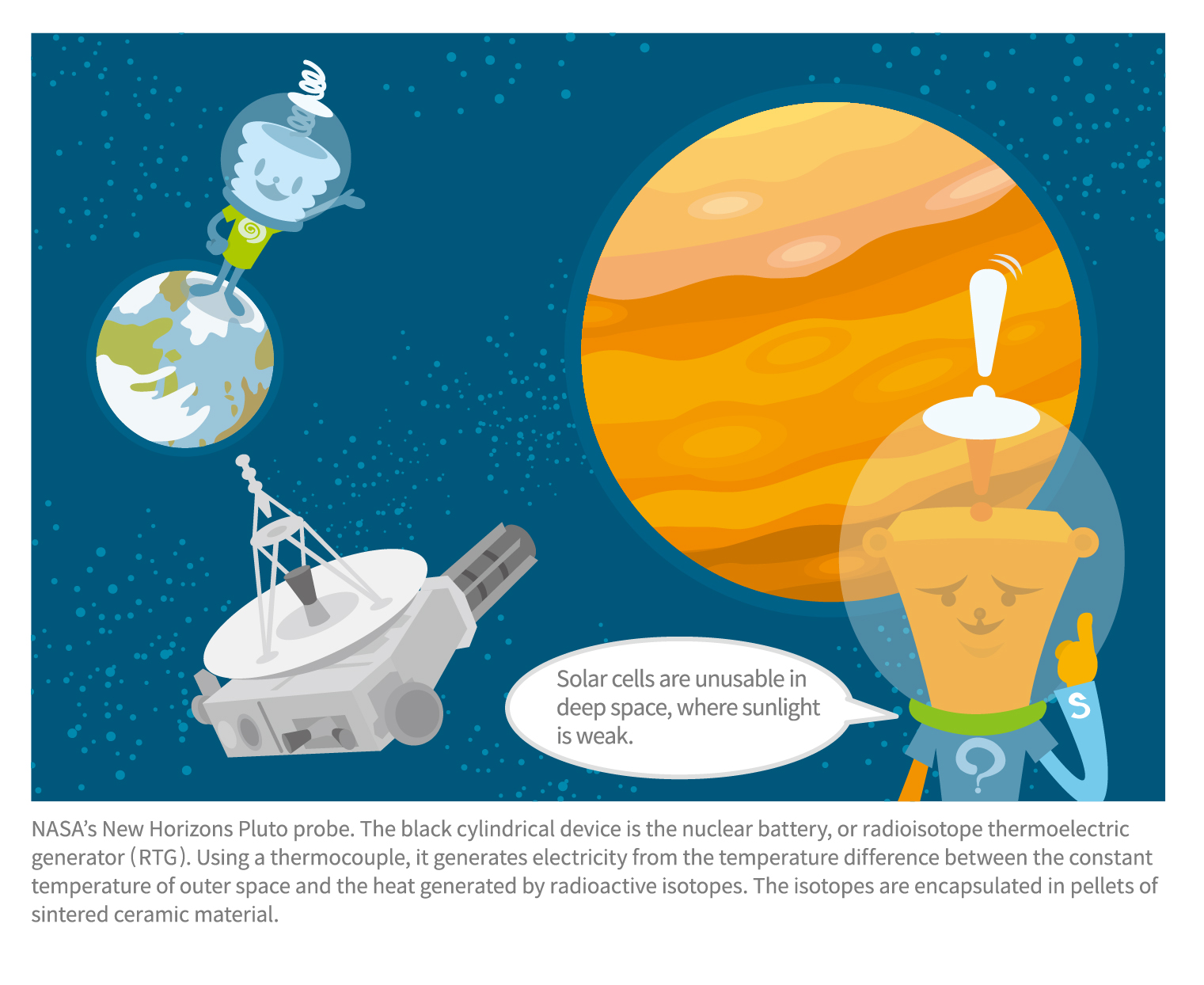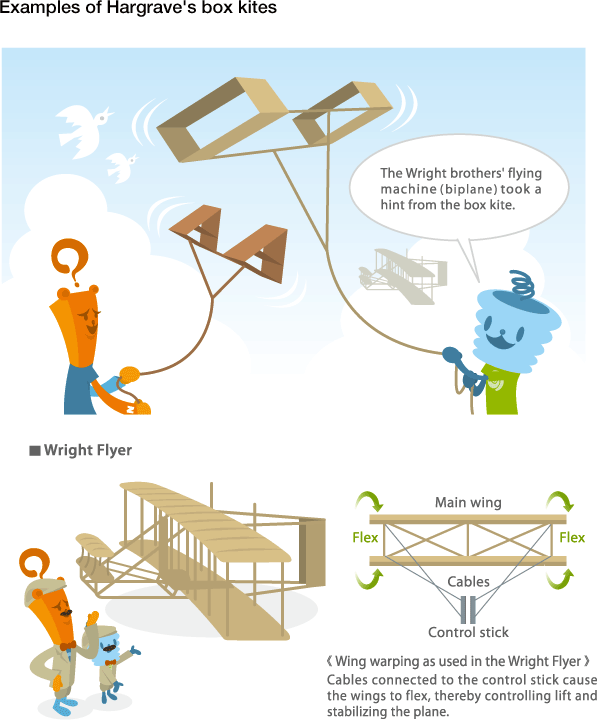
The Wonders of Electromagnetism
vol.5 Power Inductors in Mobile Phones
There is also an Ohm's law for magnetic circuits
Coils come in various shapes and configurations. The type where the conductor is wound in a cylindrical shape is called a solenoid, a name that was given to it by Ampere, the physicist known for the "right-handed screw rule." Ampere also discovered that when a current flows in a solenoid, magnetic force lines pass through the core of the interior and create the same effect as a magnet. This can be easily verified by winding a wire around a cardboard tube or similar and connecting a battery to the coil. The needle of a magnetic compass will deflect when brought near the openings at both ends of the tube.
With a small dry cell battery, the magnetic force generated by the current in the solenoid will not be strong enough to attract iron. However, if a core of soft iron is inserted into the tube, it becomes an electromagnet capable of generating a much stronger magnetic force. This is because a magnetic body such as iron strongly absorbs magnetic force lines, similar to water being absorbed by a sponge. The degree to which magnetic force lines can be absorbed by a body is called the saturation flux density, and the ease of absorption is called magnetic permeability. Soft iron is a material that has both high saturation flux density and high magnetic permeability, making it suitable for use as a core in electromagnets.
Electricity and magnetism are somewhat like twins whose actions and personality tend to resemble each other. For example, the current flowing in an electrical circuit corresponds to the magnetic flux in a magnetic circuit, and the conductivity indicating how easily the current can flow corresponds to the magnetic permeability of a magnetic body. The famous Ohm's law that students learn in Physics class states that "electromotive force (voltage) = current x electric resistance." This law applies to electrical circuits, but with regard to magnetic circuits, the following similar law exists: "magnetomotive force = magnetic flux x magnetic resistance." In the case of an electrical circuit, unless there is a short circuit or similar, there will be no leak current, but in magnetic circuits, leakage of magnetic flux occurs in various places. The fact that air also has slight magnetic permeability results in the creation of a superfluous circuit that does not show up in the circuit diagram. This kind of leakage flux becomes the cause of energy losses and noise. Designing a transformer that uses coils is therefore by no means a simple matter.
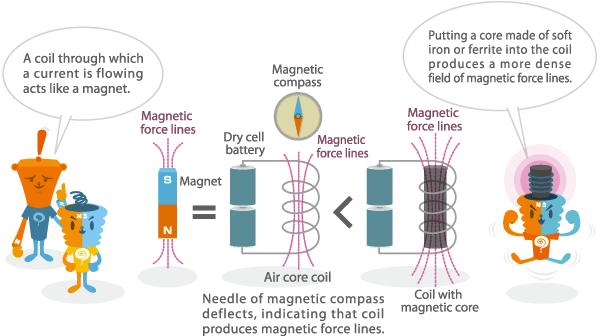
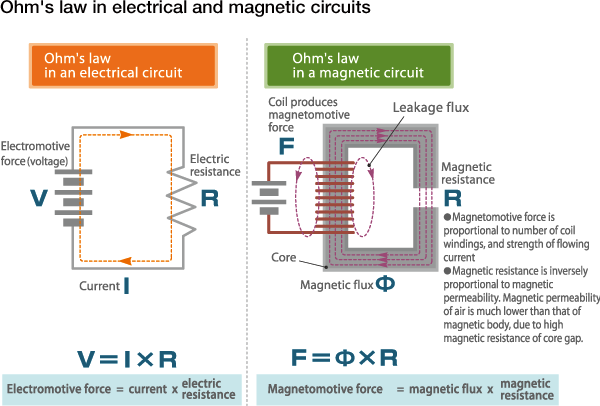

Capacitors store electrical energy, coils store magnetic energy
The similarities between electricity and magnetism are apparent also in the way capacitors and coils work. Just as capacitors can store electrical energy, coils can store magnetic energy. How a coil that is formed simply by winding a conductor can store energy may be a bit hard to see at first. It is related to the phenomenon of self induction which is a type of electromagnetic induction.
When the switch is set to ON, causing current to flow in the coil, an electromotive force is generated in the coil, with an orientation that resists the current. By contrast, when the current is interrupted by setting the switch to OFF, the electromotive force in the coil now is oriented in a direction that tends to maintain the original current. This phenomenon is called the self induction of the coil. The fact that a coil stores energy can be ascertained using a simple circuit with a neon lamp, as shown below. The coil and neon lamp are wired in parallel and connected to a dry cell battery. Lighting up the neon lamp requires a voltage of about 70 V. Simply causing a current to flow in the coil therefore will not result in the lamp being activated. But in the instant when the switch is set to OFF, the neon tube lights up momentarily. This happens because the energy stored in the coil is suddenly released and generates a high electromotive force. Fluorescent lighting uses the same principle, namely self induction of the coil in the stabilizer.
The self induction effect of coils was discovered by the American scientist Henry. The unit used to express the inductance (L) of a coil is called Henry (H) after him. It is commonly believed that Faraday discovered electromagnetic induction, it was Henry who got there first. However, Faraday was the first to publish his findings and the discovery is therefore considered his achievement. While the inductance unit is called Henry, Faraday's name was given to the unit for capacitance (F). Incidentally, the energy that can be stored by a coil is expressed by the formula [LI2/2], where L is the inductance and I is the current. The energy stored by a capacitor coil is expressed by the formula [CV2/2], where C is the capacitance and V is the voltage. Here again we see an interesting similarity.
Henry is also known for having constructed a powerful electromagnet. Wishing to have the whole world benefit from his research, he purposely did not patent his discoveries and inventions, allowing their free use by everyone. Both Henry and Faraday were high-minded scientists of noble character.
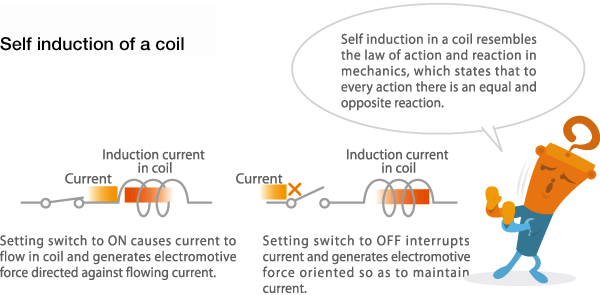
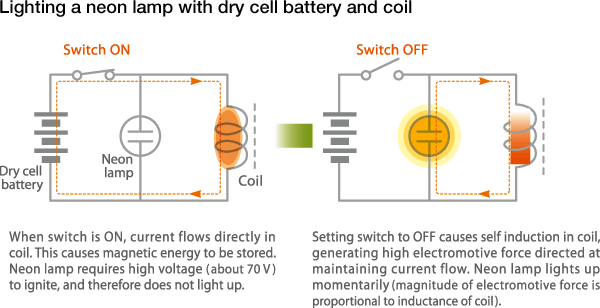

Power inductors are key components of small DC-DC converters
A particular type of coil configured as an electronic component is also called an inductor. As this name indicates, the coil generates an inductive electromotive force, causing an induced current to flow when there is a change in magnetic flux.
Inductors are generally classified into two major categories, namely the signal type and power supply type. A coil will smoothly pass direct current or alternating current of low frequency, but offers increasing resistance to currents with higher frequencies. This characteristic is used in signal type inductors found for example in filter circuits and similar applications. Inductors for power supply applications on the other hand make use of the energy-storing capability of coils. They are key components of compact DC-DC converters found for example in mobile phones and similar devices.
A DC-DC converter serves to convert the DC voltage from a battery or other source into the voltage required to operate a given circuit. But signal type inductors can only handle weak currents and therefore must have low losses and small dimensions. Most signal type inductors therefore are multilayer chips where the coil is formed through a multilayering process. Power supply type inductors on the other hand must be able to sustain larger currents and are usually constructed with windings around a ferrite core. These are called power inductors or power coils.
DC-DC converters come in various types. The illustration below shows a small on-board converter such as found in mobile phones and other mobile devices. The switching component (transistor or MOSFET) allows repeated on/off switching at high speed, thereby sending a pulse type current through the coil. In the ON state of the switch, the coil stores energy, which is then released in the OFF state, creating an induced current. On/off timing is controlled by an integrated circuit to achieve the desired DC voltage. Because the current is "chopped" into discrete pieces, such a component is also referred to as a chopper DC to DC converter. Its relatively low parts count makes it possible to realize a compact local power supply at low cost.
DC-DC converters in a mobile phone act somewhat like miniature DC transformer stations. Power inverters from TDK using optimized ferrite materials for enhanced conversion efficiency are making significant contributions in this area.
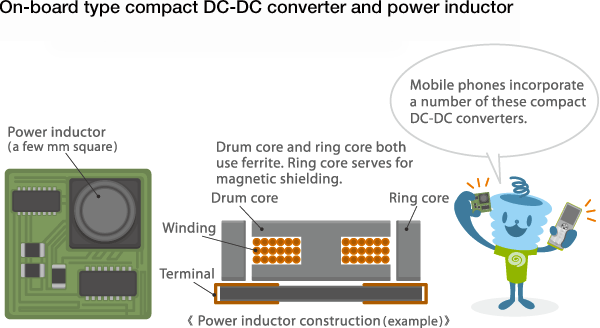
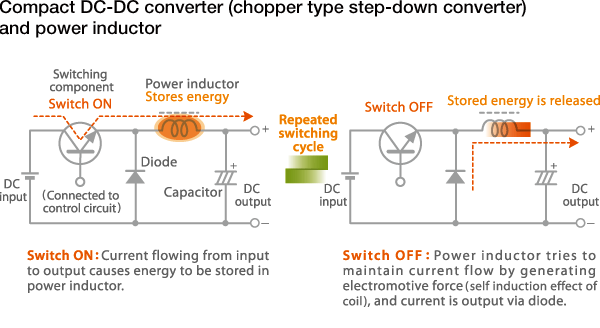
TDK is a comprehensive electronic components manufacturer leading the world in magnetic technology



